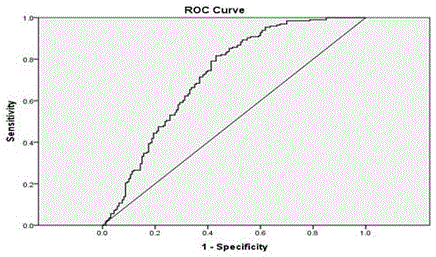Epitode amino acid sequence of TFG-beta1 (transforming growth factor beta-1) as breast cancer detecting marker and application of epitode amino acid sequence
A TGF-, antigenic epitope technology, applied in the biological field, can solve the problems of poor specificity and low sensitivity, and achieve the effect of high specificity and high sensitivity
- Summary
- Abstract
- Description
- Claims
- Application Information
AI Technical Summary
Problems solved by technology
Method used
Image
Examples
Embodiment 1
[0026] kit preparation
[0027] 1 Reagents See Tab.2-7 for reagent preparation.
[0028]
[0029]
[0030]
[0031]
[0032]
[0033]
[0034] 2 operations
[0035] (1) Coating: The enzyme plate should be washed 3 times with washing buffer, the working antigen should be diluted to the working concentration with the coating solution, coated on the enzyme plate, and kept overnight at 4°C.
[0036] (2) Add glutamic acid: Wash 3 times with washing buffer, dilute glutamic acid with coating solution to a concentration of 100 μg / ml, 200 μl per well, incubate at 37°C or room temperature for 1 hour;
[0037](3) Add plasma and quality control control (primary antibody): Wash the enzyme-labeled plate three times with washing buffer, and dilute the plasma to an appropriate concentration with coating solution, generally 1:100-1:500, 100 μl per well, Incubate at 37°C or room temperature for 1 hour;
[0038] (4) Secondary antibody incubation: Wash 3 times with washing ...
Embodiment 2
[0042] Detection of TGF-β1 Auto IgG Antibody in Patients with Breast Cancer
[0043] 1 Sample collection: In this study, 232 breast cancer samples confirmed by radiological examination and histological examination were selected from the Second Hospital of Jilin University and Provincial Cancer Hospital. All serum samples had not undergone any anti-cancer treatment before collection, and had comprehensive clinical data and information. At the same time, 210 healthy control samples were recruited. Clinical interviews and imaging examinations ruled out the possibility of breast cancer. The healthy group and the breast cancer group were matched in gender and age and were comparable ( P >0.05)
[0044] 2 Test results: TGF-β1 autoantibody expression level (Tab.8): There is a statistical difference between the breast cancer group and the healthy control group ( t =-4.231, P <0.001).
[0045] ROC curve analysis: the area under the ROC curve for TGF-β1 auto-IgG antibody detection...
PUM
 Login to View More
Login to View More Abstract
Description
Claims
Application Information
 Login to View More
Login to View More - R&D
- Intellectual Property
- Life Sciences
- Materials
- Tech Scout
- Unparalleled Data Quality
- Higher Quality Content
- 60% Fewer Hallucinations
Browse by: Latest US Patents, China's latest patents, Technical Efficacy Thesaurus, Application Domain, Technology Topic, Popular Technical Reports.
© 2025 PatSnap. All rights reserved.Legal|Privacy policy|Modern Slavery Act Transparency Statement|Sitemap|About US| Contact US: help@patsnap.com



